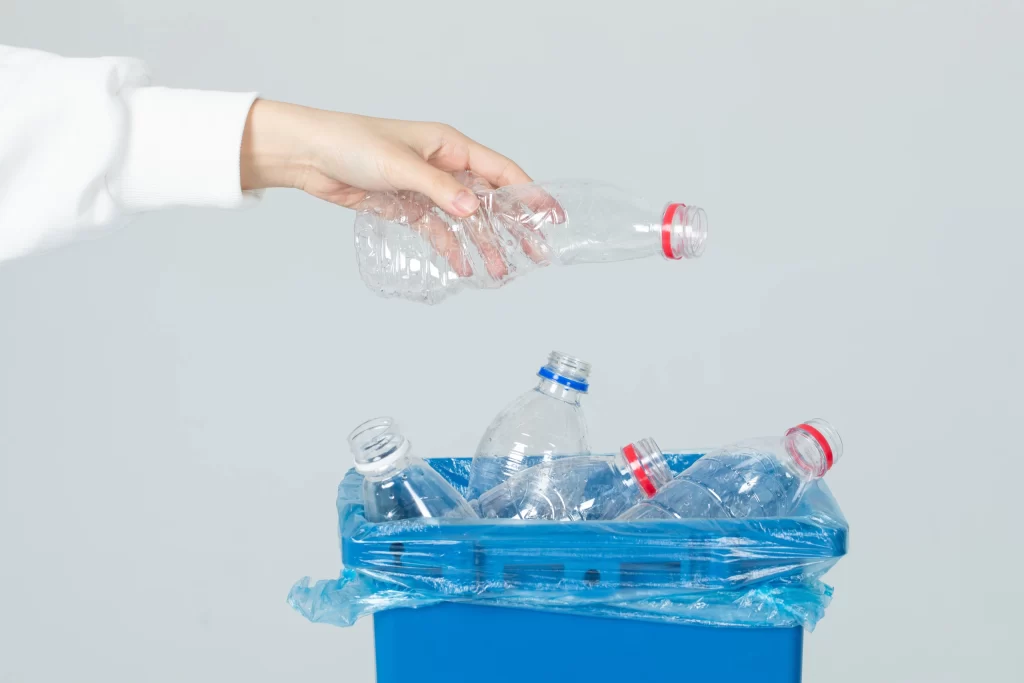1、 The definitions of the two separately
PCR physical recycling: PCR physical recycling is an environmentally friendly technology that converts waste into renewable resources through physical treatment methods. It mainly relies on mechanical equipment and physical operations, such as separation, screening, crushing, etc., to turn waste into high-quality renewable resources.
PCR chemical recycling: PCR chemical recycling is an environmentally friendly technology that converts waste into renewable resources through chemical reactions. It relies on chemical reactions to alter the molecular structure of waste, thereby obtaining reusable renewable resources.
2、 The essential difference between the two
There is a significant difference between physical and chemical PCR recovery in essence:
Principle: PCR physical recycling mainly achieves waste regeneration through physical operations, such as screening, separation, crushing, etc. PCR chemical recovery relies on chemical reactions, which transform waste into renewable resources by altering its molecular structure.
Application object: PCR physical recycling is suitable for relatively simple waste, such as paper, metal, glass, etc. PCR chemical recovery is mainly used for waste containing complex chemical components, such as plastics, organic matter, etc.
Resource recycling method: PCR physical recycling mainly uses mechanical equipment to physically treat waste and convert it into renewable resources. PCR chemical recovery involves extracting useful components from waste through chemical reactions and converting them into renewable resources.
3、 The recycling standards for both
PCR physical recycling standards: Physical recycling standards mainly include waste treatment efficiency, resource recovery rate, and quality of recycled resources. Different types of waste may have different standards, but it is usually required that the recycled recycled resources reach a certain purity and quality standard to ensure that they can be applied in the corresponding industry fields.
PCR chemical recovery standards: The standards for chemical recovery mainly involve the efficiency of chemical reactions, waste conversion rate, and emission restrictions of harmful substances. At the same time, the recycled renewable resources also need to undergo strict quality testing to ensure that they meet the needs and standards of relevant industries.
4、 The respective application areas of the two
Application areas of PCR physical recycling: PCR physical recycling is applicable to many industries, such as paper recycling, metal waste recycling, and plastic waste recycling. In these fields, physical recycling is often used for separating and extracting renewable resources.
Application field of PCR chemical recycling: PCR chemical recycling is mainly applied to waste containing complex chemical components, such as plastics, rubber, organic solvents, etc. In these fields, chemical recycling can convert waste into high-quality renewable resources, achieving resource recycling.
In summary, PCR physical recovery and chemical recovery are two different waste recovery technologies. Physical recycling mainly achieves the extraction of renewable resources through physical treatment, and is suitable for relatively simple waste such as paper, metal, glass, etc; Chemical recycling, on the other hand, converts complex waste into renewable resources through chemical reactions and is suitable for waste types such as plastics, rubber, and organic solvents.
Comparative analysis table:
| characteristic | PCR physical recovery | PCR chemical recovery |
| principle | Realize the regeneration of waste through physical operations, such as screening, separation, crushing, etc | Relying on chemical reactions to convert waste into renewable resources |
| Applicable waste | Relatively simple waste, such as paper, metal, glass, etc | Waste with complex chemical components, such as plastics, rubber, organic solvents, etc |
| Resource recycling methods | Physical processing through mechanical equipment | Extracting useful components through chemical reactions |
| application area | Paper recycling, metal waste recycling, plastic waste recycling, etc | Plastic recycling, organic solvent recycling, rubber recycling, etc |
| Recycling standards | In terms of waste treatment efficiency, resource recovery rate, and quality of renewable resources, etc | Chemical reaction efficiency, waste conversion rate, and restrictions on harmful substance emissions |
Conclusion:
PCR physical recycling and chemical recycling are two different but complementary waste recycling technologies. Physical recycling mainly achieves waste regeneration through mechanical equipment and physical operations, suitable for relatively simple waste; Chemical recycling relies on chemical reactions to convert complex waste into renewable resources, suitable for waste containing complex chemical components. In practical applications, taking into account the characteristics and recycling efficiency of waste, selecting appropriate recycling technologies, constructing a circular economy system, and transforming waste into valuable renewable resources are important measures to promote sustainable development.
In the future development, with the continuous advancement of technology and the enhancement of environmental awareness, PCR physical and chemical recovery will be more perfect and efficient. By integrating these two technologies, we have the potential to achieve higher levels of waste recycling and resource utilization, contributing more to building a green and clean future. At the same time, the government, enterprises, and the public should work together to promote the research and application of environmental protection technologies, jointly build an ecological friendly society, and create a better tomorrow.

